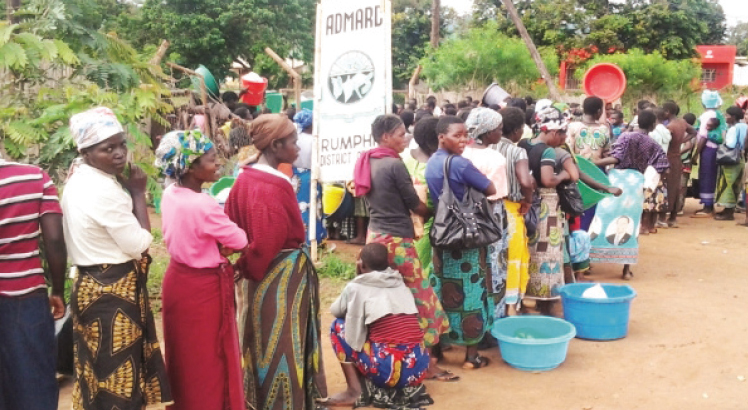Let us add value to our agricultural products
But some seeds fell in good soil, and the plants bore grain: some had one hundred grains, others 60, and others 30.”–Matthew 13:8
As the country ventures into development planning mode with the two-day planning session in Lilongwe, as a member of the public I offer my input to the dialogue. Malawi is a predominantly agri-based economy. The majority of farming is undertaken by subsistent farmers while large-scale farms are the domain of a few local and foreign persons.
The National Development Conference, opened by President Chakwera under the theme Beyond Political Freedom to Inclusive Wealth Creation and Self-reliance, is being hosted by the National Planning Commission in collaboration with Council for Non-Governmental Organisations in Malawi, the Malawi Confederation of Chambers of Commerce and Industry, and Michigan State University. It is a stocktaking and strategising exercise that aims to provide ways to accelerate agreed development priorities. It is my deepest desire that Malawi develops a practical successor to the Vision 2020 and that ways and means will be crafted that will transform Malawi into a better and vibrant country.
At the onset of democratic rule in Malawi, one of the major decisions that were made by the Bakili Muluzi administration was that of privatisation. The privatisation programme cut the bloodline of the agricultural base operations and led to a bulging of street vending as rural masses felt the pinch of vanishing industries that bought their produce. This is water under the bridge.
As the majority of rural-based Malawi citizens grapple to make ends meet in their subsistent farming, attention is brought to the table in this national planning process about the value of value-added farming programmes. As this grain of thought was being processed in my mind, a social media post caught my eye about 70 guidebooks, issued by Mawera, an agriculturist at the University of Botswana.
These are great resources and highlight the wealth of produce that comes out of our soils across the African continent and grown in Malawi. The idea being advanced in highlighting these products is that as long as the farmer continues to grow his or her produce, carry them on the back or cart to the roadside makeshift market, or official market centre, he or she will remain a subsistent farmer.
The transformation from subsistence happens only when value is added to the produce, thereby creating value-added products. Some may ask “what does value-adding mean?”.
When used as a noun, value-added is the amount by which the value of an article is increased at each stage of its production, excluding initial costs while used as an adjective, value-added (of goods) is having features added to a basic line or model for which the buyer is prepared to pay extra.
A good example of value-adding of produce to a product is bottled tomatoes. The processing is simple and can be done in small or large scale. If done as a village programme, it can remove the eyesore wastage of tomatoes along the Blantyre-Lilongwe roadside in Ntcheu and Dedza districts.
The process requires bottles with caps, washed ripe unbroken tomatoes, one to two leaves of oregano (this can be exchanged with paprika, basil, or rosemary), large cooking pot (that fits six to eight bottles) and fire.
Place the tomatoes in the jars, add the oregano, close the bottle tightly. Then place the pot on a fire and boil for one hour. Remove the pot from the fire and allow it to cool down. The tomato can then be taken to the market and sold. Unsold bottles can be brought back the next day, without spoilt and to be thrown.
There many other ingenious ways of adding value to produce. Another one is the rearing of crocodiles along the lakeshore to make use of crocodile skins.
Malawi can transform into a middle-income country with a sustainable change in the way we do small farmer business. The strategy of moving from the seller of the farm produce to a seller of farm products.
The time is ripe for its people to transform into a vibrant inclusive wealth creation and self-reliant. The value-added venture is the avenue to that vibrancy!





